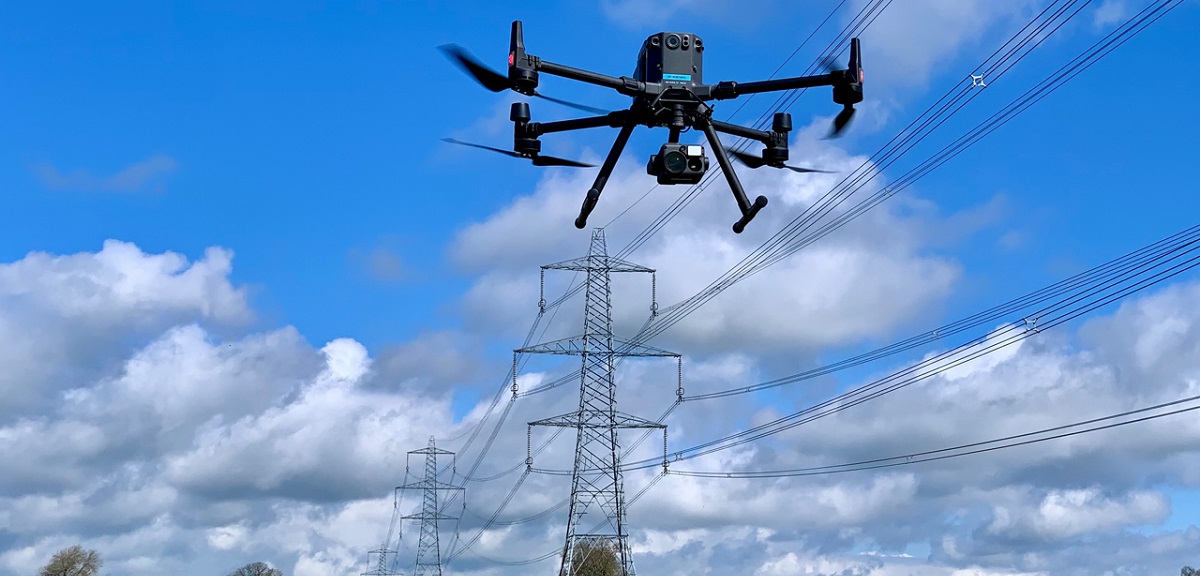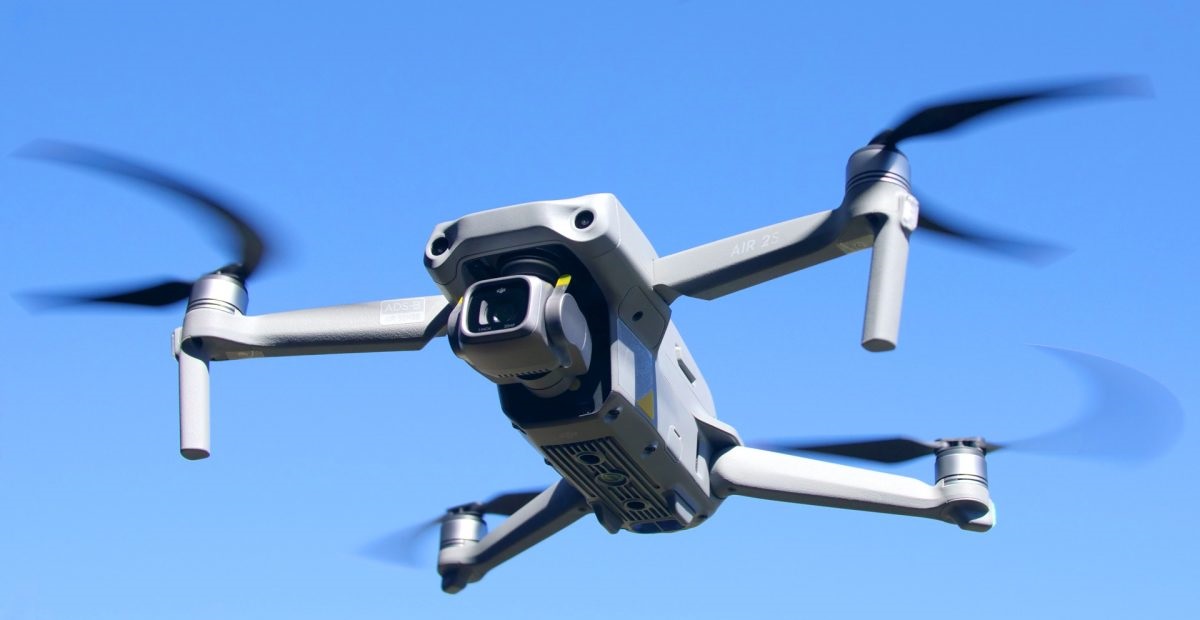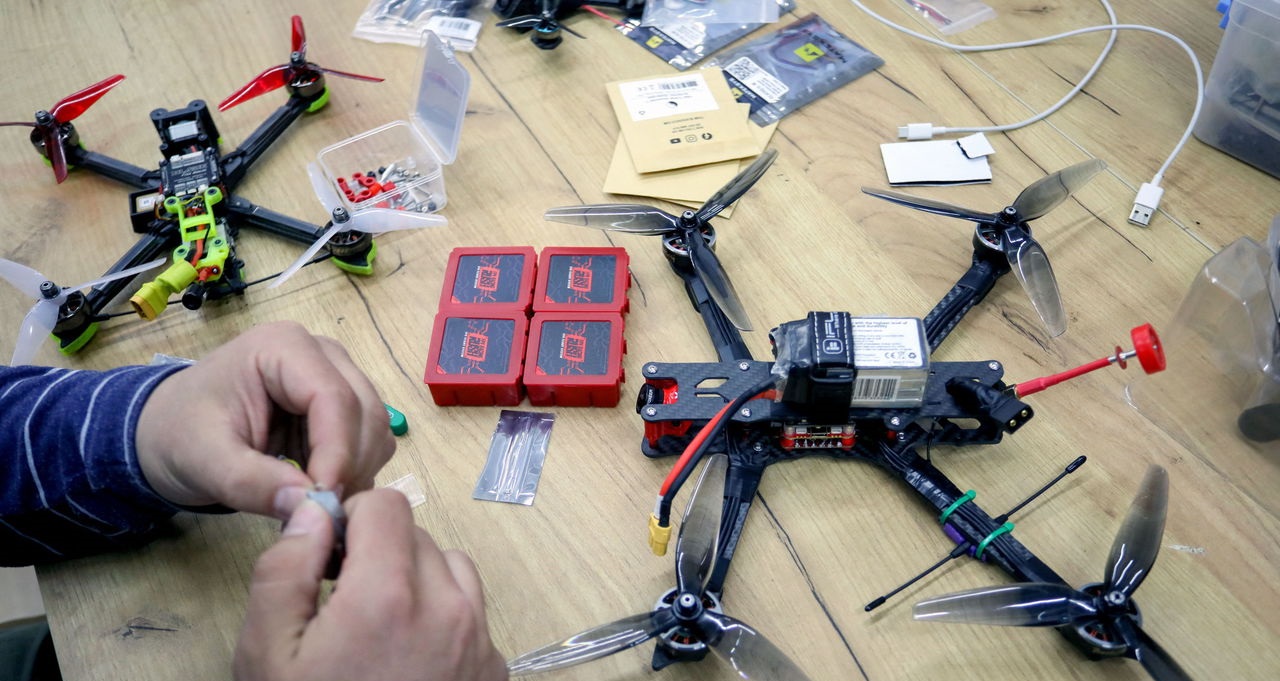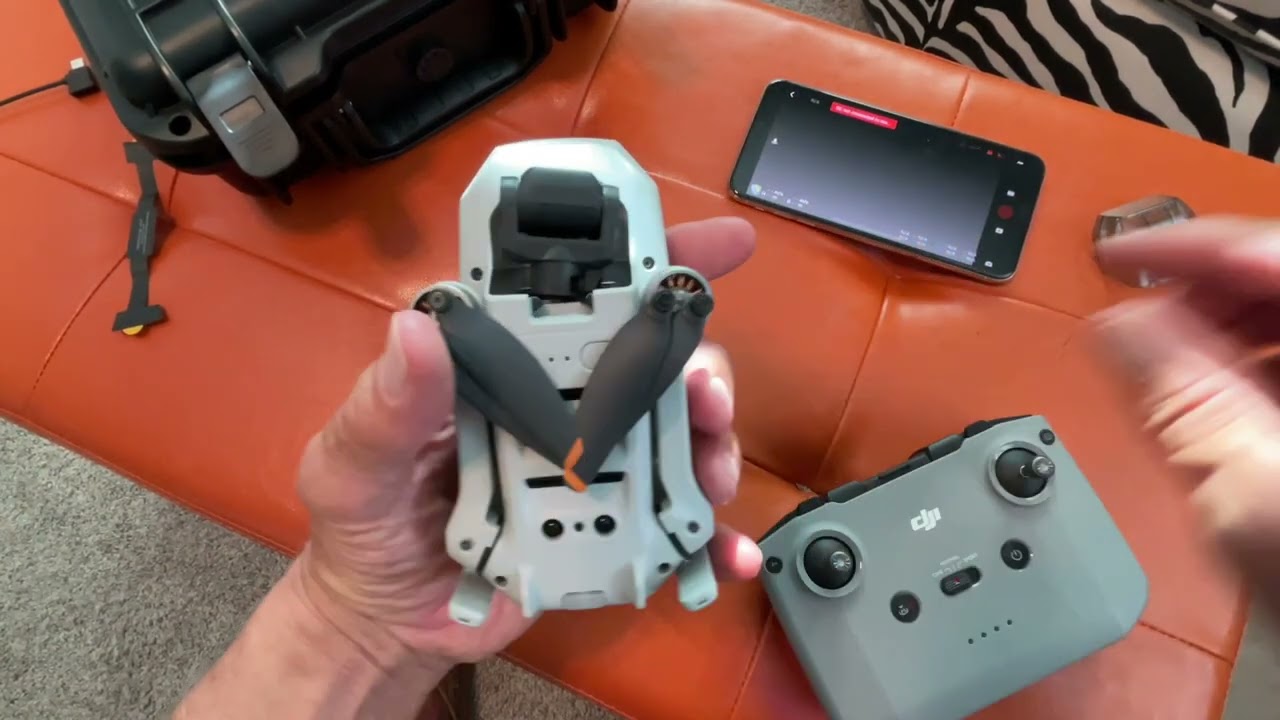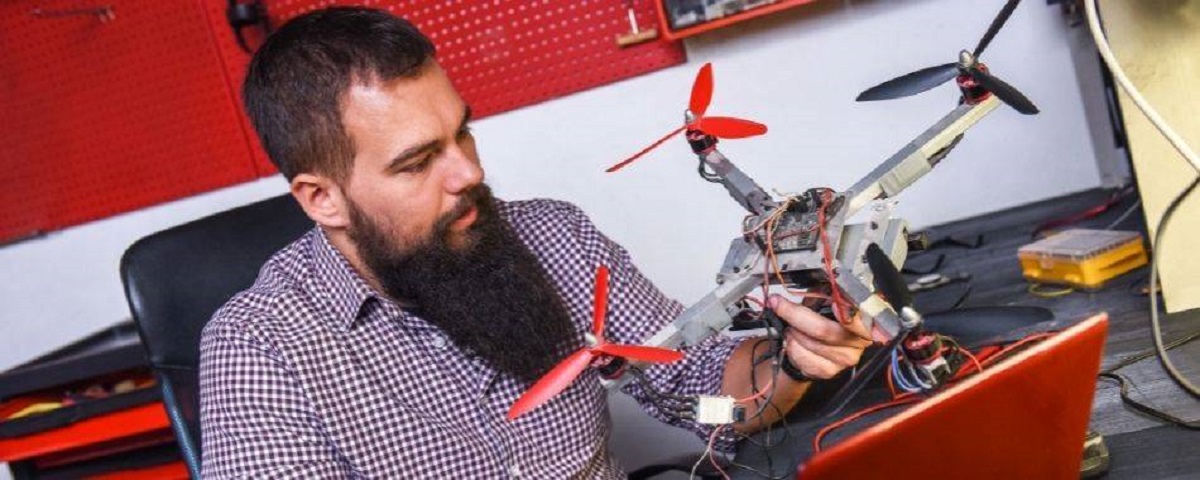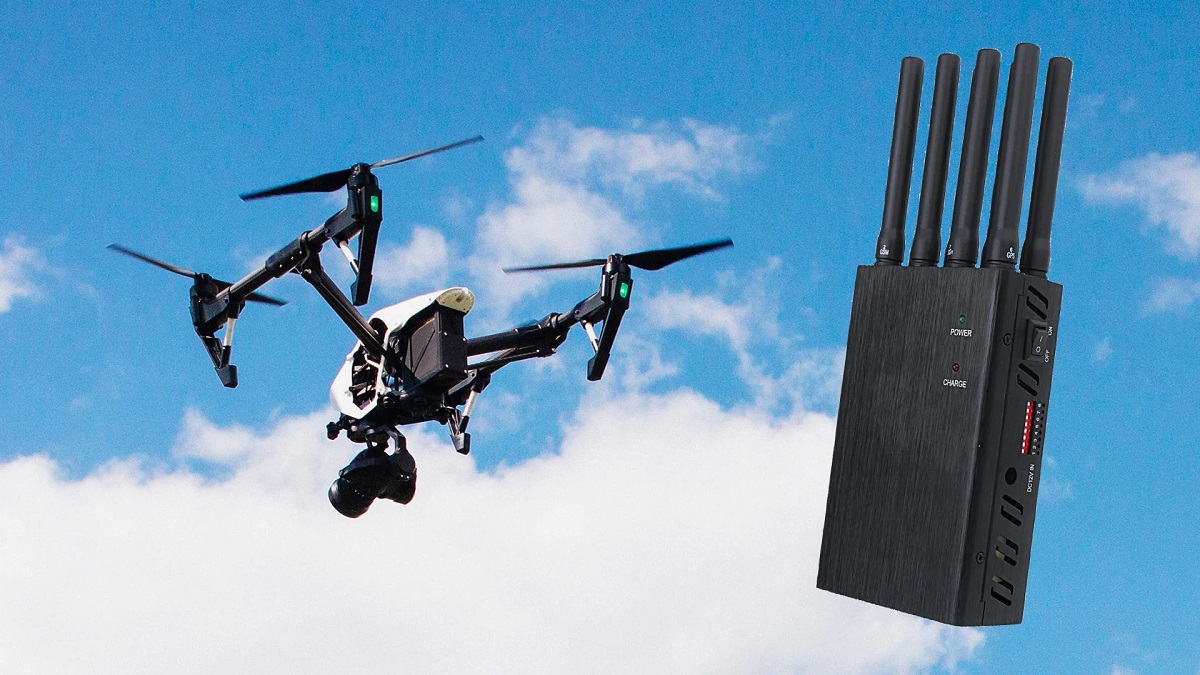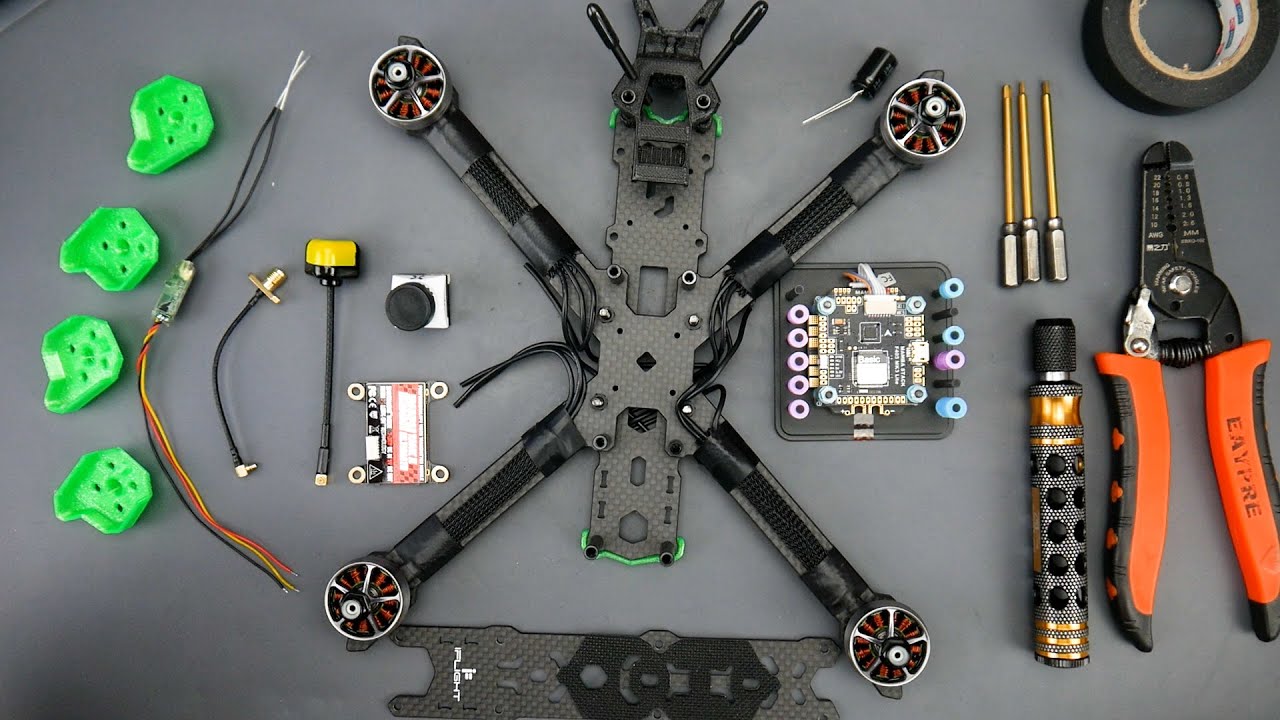Battery Power
When it comes to powering a drone, one of the most crucial components is the battery. Drones are usually equipped with a rechargeable Lithium Polymer (LiPo) battery, which provides the necessary electric power to all the other systems on board. These batteries are lightweight and have a high energy density, allowing drones to stay airborne for a reasonable amount of time.
The performance of a drone largely depends on the quality and capacity of its battery. A higher capacity battery can provide longer flight times, while a lower capacity battery may limit the drone’s flight duration. It is essential for drone enthusiasts and professionals to carefully consider the battery specifications to ensure optimal performance and sufficient power supply.
The battery powers not only the propellers but also the various electronic components of the drone. The motors that enable the propellers to spin and generate thrust rely on the power provided by the battery. Additionally, the flight controller, which acts as the brain of the drone, receives its power from the battery to process and execute flight commands.
It is important for drone users to keep their batteries in good condition. Proper maintenance and care can help prolong the battery’s lifespan and prevent performance issues. Manufacturers often provide guidelines regarding recharging, storage, and handling of batteries, which should be followed to ensure safety and maximize the battery’s efficiency.
In summary, the battery is a vital component that powers all the systems of a drone. Its capacity and quality directly impact the flight duration and overall performance of the drone. Proper maintenance and adherence to manufacturer guidelines are crucial to ensure the longevity and efficiency of the battery.
Propellers and Motors
Propellers and motors are integral parts of a drone that enable it to move through the air. The propellers, which are similar to small rotating wings, create the necessary lift for the drone to take off and stay airborne. The motors are responsible for powering the propellers and generating the necessary thrust.
Drones generally have multiple sets of propellers, usually in pairs, positioned at strategic points along the drone’s body. The propellers rotate at high speeds, creating a pressure difference that allows the drone to ascend, descend, hover, or change direction. By altering the rotation speed of each propeller, the drone can maneuver and maintain stability in the air.
The motors work in tandem with the propellers to generate the required force for flight. There are different types of motors used in drones, such as brushed and brushless motors. Brushless motors are commonly found in consumer and professional drones due to their efficiency, durability, and higher performance.
Brushless motors operate using electromagnetic fields that interact with permanent magnets, resulting in smoother and more efficient rotation. They offer improved power-to-weight ratios, which contribute to longer flight times and better maneuverability. Additionally, brushless motors eliminate the need for frequent maintenance, making them a preferred choice for drone enthusiasts.
It’s important to choose the right combination of propellers and motors according to the specific needs and requirements of the drone. Factors such as drone size, weight, desired flight characteristics, and payload capacity play a crucial role in determining the appropriate propeller and motor configuration.
In a nutshell, propellers and motors are crucial components that allow drones to achieve flight, maneuver, and maintain stability. The selection and configuration of these components greatly impact a drone’s performance, flight characteristics, and overall capability.
Flight Controller
The flight controller is the brain of a drone, responsible for controlling and stabilizing its movements during flight. It is an electronic system that processes data from various sensors and inputs, and calculates the necessary adjustments to maintain stability and respond to user commands.
The flight controller consists of a central processing unit (CPU) and a collection of sensors, such as gyroscopes, accelerometers, and barometers. These sensors provide real-time data on the drone’s orientation, acceleration, altitude, and other important flight parameters.
Using this sensor data, the flight controller continuously adjusts the motor speeds to maintain stability and level flight. It automatically makes corrections to counteract any unwanted drift or tilting of the drone, ensuring a smooth and controlled flight experience.
In addition to stabilization, flight controllers often include advanced features such as waypoint navigation, altitude hold, and return-to-home functions. Waypoint navigation allows users to pre-program a series of specific points for the drone to fly to, while altitude hold maintains a constant flight height without manual input.
The flight controller also plays a crucial role in enabling flight modes, such as manual, autonomous, or assisted modes. In manual mode, the pilot has full control over the drone’s movements, while autonomous modes rely on onboard algorithms and GPS data to perform predefined tasks.
Modern flight controllers often come with intuitive user interfaces, allowing drone operators to access and adjust various settings and parameters. They can be connected to a remote control or mobile device, providing real-time telemetry and allowing pilots to monitor the drone’s status and make adjustments on the fly.
In summary, the flight controller is a key component that ensures the stability, control, and functionality of the drone. It processes sensor data, adjusts motor speeds, and allows for advanced features and flight modes. The flight controller greatly influences the flying experience and capabilities of a drone.
GPS (Global Positioning System)
The Global Positioning System (GPS) is a crucial technology that plays a vital role in guiding and positioning drones accurately. Drones equipped with GPS can determine their precise location in real-time, enabling a wide range of advanced functions and features.
GPS satellites orbiting the Earth transmit signals that are received by the drone’s GPS receiver. The receiver then calculates the distance from multiple satellites and uses this information to triangulate the drone’s position.
One of the significant benefits of GPS in drones is its ability to provide accurate and reliable position data. This allows drones to navigate autonomously, follow pre-programmed flight paths, or accurately hold a specific position in the air. GPS also enables the implementation of “return-to-home” features, where the drone can automatically fly back to its takeoff point or a designated location.
In addition to positioning, GPS data can also provide valuable information such as altitude, speed, and heading. This data is essential for maintaining stability, ensuring safe operations, and enabling more advanced flight features.
GPS technology has opened up new opportunities for aerial photography and videography. Drones with GPS can precisely maintain a fixed position or follow a subject, allowing for smooth and stable footage. It also enables features like geofencing, which establishes virtual boundaries to keep the drone within specified areas or prevent it from entering restricted airspace.
Furthermore, GPS is a crucial component in drone safety. It allows drone operators and regulatory authorities to track and monitor drones, enhancing airspace management and mitigating the risk of collisions. Some drones even come with geolocation and identification systems embedded in their GPS modules to ensure compliance with regulations and accountability.
Overall, GPS technology provides drones with accurate positioning data, enabling autonomous flight, precise navigation, and advanced features such as return-to-home and geofencing. It plays a vital role in enhancing safety, expanding capabilities, and improving the overall flying experience with drones.
Cameras and Sensors
Cameras and sensors are essential components of a drone that allow it to capture images, record videos, and gather valuable data. These components significantly enhance the capabilities and applications of drones across various industries and recreational purposes.
Drones are equipped with cameras that come in different resolutions, providing varying levels of image and video quality. The cameras can be fixed or gimbal-mounted, with the latter offering stabilized footage by reducing vibrations and movements caused by the drone’s motion. The ability to capture high-quality images and videos from aerial perspectives has revolutionized industries like photography, filmmaking, agriculture, and surveillance.
With advancements in technology, drones now feature various sensors that enable autonomous flight and intelligent functions. One of the most common sensors is the gyroscopic sensor, which detects changes in orientation and provides stability to the drone during flight. Accelerometers measure the drone’s acceleration and help in maintaining level flight.
Some drones also incorporate obstacle avoidance sensors, such as ultrasonic sensors or proximity sensors, to detect and avoid obstacles in their flight path. These sensors enable safer and more autonomous flight operations, preventing collisions with buildings, trees, or other objects.
In addition to visual sensors, drones can be equipped with other specialized sensors like thermal cameras, multispectral cameras, LIDAR (Light Detection and Ranging), or LiDAR (Laser Imaging, Detection, and Ranging) sensors. These sensors allow drones to perform tasks such as aerial inspections, crop monitoring, 3D mapping, and search-and-rescue operations.
The data collected by cameras and sensors can be transmitted in real-time to the ground station, allowing operators to monitor the drone’s surroundings or analyze the data on the spot. Such capability proves to be invaluable in various industries where real-time monitoring and decision-making are crucial.
In summary, cameras and sensors are integral components of a drone, enabling the capture of high-quality images and videos, as well as providing crucial data for autonomous flight and intelligent functions. These components greatly expand the capabilities and applications of drones across industries and recreational activities, making them versatile tools in today’s technological landscape.
Remote Control or Transmitter
The remote control, also known as a transmitter, is the handheld device that allows the pilot to control the drone’s movements and functions. It establishes a wireless connection with the drone, sending control signals and receiving telemetry data to provide real-time feedback to the operator.
The remote control typically consists of two main components: the transmitter and the receiver. The transmitter is held by the operator and is equipped with control sticks, buttons, and switches to send commands to the drone. The receiver is located on the drone and receives the signals from the transmitter, translating them into actions for the drone to execute.
The control sticks on the transmitter are used to control the drone’s movement in different directions. By manipulating the sticks, the pilot can make the drone ascend or descend, tilt forwards or backward, or rotate clockwise or counterclockwise. Other buttons and switches on the transmitter allow the pilot to activate special flight modes, adjust camera settings, or trigger specific functions of the drone.
Remote controls use various communication technologies, including radio frequency (RF), Bluetooth, or Wi-Fi, to establish a connection with the drone. RF transmitters are the most common and reliable method for controlling drones, providing a stable and long-range communication link.
Modern remote controls often include built-in displays or support for mobile devices, allowing pilots to access real-time video feeds and telemetry information. This provides a first-person view (FPV) experience, where the pilot can see what the drone sees, enhancing situational awareness and flight control.
Some advanced remote controls also support features like waypoint navigation or follow-me modes. Waypoint navigation allows the pilot to pre-plan a flight path with specific locations for the drone to follow automatically. Follow-me mode enables the drone to autonomously track and follow the pilot’s movements, allowing for dynamic and unique shots.
It’s important for drone pilots to familiarize themselves with the functionality and controls of their remote control systems to operate the drone safely and effectively. Understanding the modes, switches, and buttons on the transmitter is crucial for achieving the desired flight characteristics and executing complex flight maneuvers.
In summary, the remote control is an essential device that enables pilots to command and control the drone’s movements and functions. It establishes a wireless connection with the drone and allows for precise and intuitive control. The features and capabilities of the remote control greatly impact the pilot’s experience and the drone’s overall performance.
Antennas and Receivers
Antennas and receivers are crucial components of a drone’s communication system, allowing for the transmission and reception of signals between the drone and the remote control or ground station. These components play a vital role in establishing a reliable and stable connection, enabling effective control and data transmission.
Antennas are responsible for transmitting and receiving radio frequency (RF) signals. They come in various shapes and sizes, depending on the specific communication technology used by the drone. Some common types of antennas found on drones include dipole antennas, patch antennas, and helical antennas.
The antenna on the drone is usually embedded in the body or attached to the drone’s frame. It is designed to radiate signals in a specific pattern, usually in a spherical or directional manner, to ensure optimal signal strength and coverage. The performance of the antenna greatly impacts the range and reliability of the drone’s communication system.
On the receiving end, the receiver is responsible for capturing and processing the signals received by the antenna. The receiver is typically located on the drone itself or the remote control. It amplifies and demodulates the received signals, allowing the drone or remote control to interpret the commands or data transmitted by the pilot.
Receivers are equipped with various electronic components to enhance the reception and processing of signals. These components include filters, amplifiers, demodulators, and decoders, which work together to ensure accurate signal detection and reliable communication.
It is important to note that the location and orientation of the antennas on both the drone and the remote control can significantly affect the signal strength and range. Proper positioning and alignment help minimize signal interference and improve signal reception, ensuring a more stable and reliable connection.
In some cases, drone operators may use additional equipment, such as signal boosters or amplifiers, to extend the communication range further. These devices are designed to enhance signal strength and overcome obstacles or interference in the signal transmission path.
In summary, antennas and receivers are vital components of a drone’s communication system. They work together to establish a reliable and stable connection between the drone and the remote control or ground station. Proper positioning and alignment of the antennas, along with the use of advanced receivers, ensure optimal signal reception and enhance the overall performance of the drone’s communication system.
Electronic Speed Controllers (ESCs)
Electronic Speed Controllers (ESCs) are critical components of a drone that regulate the speed and rotation of the motors. They act as intermediaries between the flight controller and the motors, converting signals from the flight controller to the appropriate motor speed and direction.
Each motor on a drone is connected to an ESC, and together they form a closed-loop system that ensures precise control over the drone’s movement. The ESC receives commands from the flight controller, which determine the desired motor speed and direction based on user input or autonomous control algorithms.
ESCs operate by adjusting the voltage and current supplied to the motors, controlling their rotational speed. This adjustment is achieved through a technique known as pulse width modulation (PWM). The ESC rapidly toggles the power to the motor on and off at varying intervals, thereby controlling the speed of the motor.
ESCs also play a crucial role in the propulsion system of the drone. They regulate the amount of power distributed to each motor, allowing for balanced and coordinated movements during flight. This balance is essential for maintaining stability, level flight, and smooth maneuvering.
Most ESCs used in drones are electronic speed controllers with built-in firmware programmed to support various motor types, such as brushed or brushless motors. The firmware determines the specific characteristics, throttle response, and motor timing required for optimal performance.
Some advanced ESCs also incorporate additional features, such as motor braking or regenerative braking. These features can improve the responsiveness of the drone’s throttle control and enhance its ability to decelerate quickly.
Furthermore, ESCs are equipped with safety features to protect against potential problems. They can detect abnormal conditions, such as motor or battery malfunctions, and initiate safety measures like power cutoff or motor shutdown to prevent damage or accidents.
Proper calibration and configuration of ESCs are essential to ensure their optimal performance. This includes setting the appropriate maximum and minimum throttle values, calibrating the motor alignment, and configuring other parameters specific to the drone’s requirements.
In summary, electronic speed controllers (ESCs) are crucial components that regulate motor speed and provide precise control over a drone’s movements. They convert signals from the flight controller into the appropriate motor speed and direction, enabling stability, responsive control, and safe operation of the drone.
Onboard Computer and Software
The onboard computer and software are integral parts of a drone’s operating system, providing the intelligence and computational power required for autonomous flight, navigation, and advanced functionality. They enable drones to process data, make decisions, and execute tasks based on predefined algorithms or user commands.
The onboard computer, also known as the flight controller or flight management system, is the central processing unit that controls the drone’s operations. It receives input from various sensors, such as accelerometers, gyroscopes, and GPS receivers, and processes this data to determine the drone’s position, orientation, and other important flight parameters.
With the help of sophisticated algorithms and software, the onboard computer can perform complex calculations in real-time, ensuring stable flight, maintaining position, and executing maneuvers with precision. It continuously adjusts the speed of the motors, controls the drone’s stability, and responds to user commands or autonomous flight modes.
Software plays a critical role in enabling the functionality and capabilities of drones. Manufacturers provide firmware, which is the embedded software that controls the core operations and functions of the drone. This includes flight control algorithms, motor control, sensor integration, safety features, and communication protocols.
In addition to the firmware, there are also various software applications and ground control stations that allow users to interact with the drone, plan missions, and monitor its status. These software tools provide an intuitive user interface, telemetry data, live video feeds, and the ability to configure and update the drone’s settings.
The software running on the drone’s onboard computer is often designed to be modular and upgradable. This allows for the integration of new features, improved performance, and the ability to adapt to changing technological advancements. Software updates may include bug fixes, performance optimizations, and additional functionalities that enhance the drone’s capabilities.
Drones with advanced software capabilities can perform autonomous flight, follow predefined flight paths, conduct surveys or inspections, and even perform complex aerial maneuvers. They can also interact with other systems, such as ground sensors or remote servers, for data transfer, mission planning, or collaborative tasks.
It’s important for drone operators to keep their software up to date and follow recommended firmware updates to ensure optimal performance, reliability, and safety. Regular software updates often address security vulnerabilities, improve usability, and add new features that enhance the overall user experience.
In summary, the onboard computer and software form the brain of a drone, enabling autonomous flight, processing sensor data, and executing complex operations. They provide the intelligence, computational power, and functionality that make drones versatile and capable tools in various industries and applications.
Wi-Fi and Wireless Communication
Wi-Fi and wireless communication technologies play a significant role in drones, enabling data transmission, real-time video streaming, and remote control capabilities. They provide the means for drones to establish a wireless connection with ground control stations or other devices, facilitating efficient communication and control.
Wi-Fi is one of the most commonly used wireless communication technologies in drones. It allows for high-speed data transfer over short to medium ranges. Many drones have built-in Wi-Fi capabilities, allowing them to connect directly to smartphones, tablets, or other Wi-Fi-enabled devices.
Wi-Fi communication enables the transmission of live video feeds from the drone’s camera to the ground control station or a connected device. This real-time video streaming allows the pilot or operator to have a first-person view (FPV) of the drone’s perspective, enhancing situational awareness and flight control.
In addition to video transmission, Wi-Fi also enables remote control of the drone. Once connected, the pilot can use a dedicated app or software to control the flight parameters, adjust camera settings, and access other features of the drone. It provides a convenient and intuitive interface for user interaction and control.
Wireless communication in drones is not limited to Wi-Fi. Other wireless technologies, such as Bluetooth and radio frequency (RF), may also be utilized depending on the specific drone and its intended use. Bluetooth can be used for short-range communication, such as connecting peripherals or accessories to the drone.
RF communication, on the other hand, is often used for longer-range control and telemetry data transmission. It allows for reliable and stable communication between the drone and the remote control or ground control station. RF communication systems generally offer extended ranges compared to Wi-Fi or Bluetooth, ensuring that the pilot maintains control over the drone even at greater distances.
Wireless communication is not just limited to drone control and data transfer but also serves other purposes. For example, drones equipped with wireless communication capabilities can be used for search and rescue missions, where they can be deployed to transmit signals or relay vital information from remote areas with limited or no connectivity.
It is important to note that wireless communication in drones operates within specific frequency bands regulated by local authorities. Drone operators must comply with the regulations and frequencies authorized for drone use in their respective regions to maintain safe and interference-free communications.
In summary, Wi-Fi and wireless communication technologies are essential components for drones, enabling data transfer, real-time video streaming, and remote control capabilities. These wireless communication systems enhance connectivity, control, and functionality, making drones versatile tools in various applications and industries.







